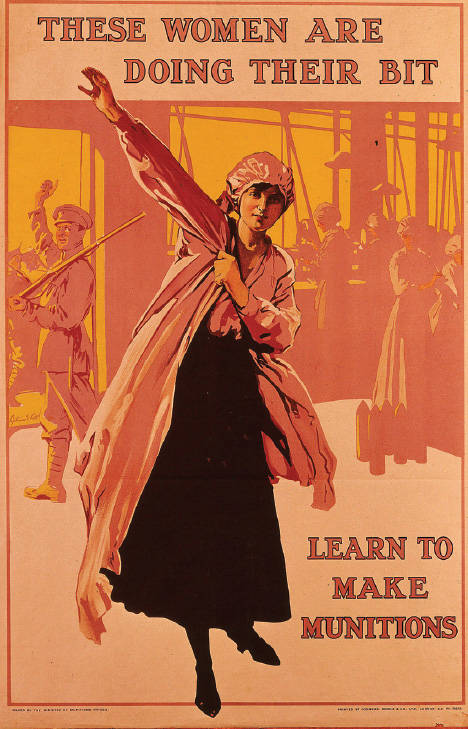An Accident Waiting to Happen
Europe’s modern transformation and its global ascendancy were certainly not accompanied by a growing unity or stability among its own peoples—quite the opposite. The most obvious division was among its competing states, a long-standing feature of European political life. Those historical rivalries further sharpened as both Italy and Germany joined their fragmented territories into two major new powers around 1870. The arrival on the international scene of a powerful and rapidly industrializing Germany, seeking its “place in the sun,” was a disruptive new element in European political life, especially for the more established powers, such as Britain, France, and Russia. Since the defeat of Napoleon in 1815, a fragile and fluctuating balance of power had generally maintained the peace among Europe’s major countries. By the early twentieth century, that balance of power was expressed in two rival alliances, the Triple Alliance of Germany, Italy, and the Austro-Hungarian Empire and the Triple Entente of Russia, France, and Britain. Those commitments, undertaken in the interests of national security, transformed a relatively minor incident in the Balkans into a conflagration that consumed almost all of Europe.
Explanation
Question
What aspects of Europe’s nineteenth-century history contributed to the First World War?
[Answer Question]
That incident occurred on June 28, 1914, when a Serbian nationalist assassinated the heir to the Austro-Hungarian throne, Archduke Franz Ferdinand. To the rulers of Austria-Hungary, the surging nationalism of Serbian Slavs was a mortal threat to the cohesion of their fragile multinational empire, which included other Slavic peoples as well. Thus, they determined to crush it. But behind Austria-Hungary lay its far more powerful ally, Germany; and behind tiny Serbia lay Russia, with its self-proclaimed mission of protecting other Slavic peoples. Allied to Russia were the French and the British. Thus a system of alliances intended to keep the peace created obligations that drew the Great Powers of Europe into a general war by early August 1914 (see Map 20.2).

The outbreak of that war was something of an accident, in that none of the major states planned or predicted the archduke’s assassination or deliberately sought a prolonged conflict, but the system of rigid alliances made Europe vulnerable to that kind of accident. Moreover, behind those alliances lay other factors that contributed to the eruption of war and shaped its character. One of them was a mounting popular nationalism (see pp. 882–84). Slavic nationalism and Austro-Hungarian opposition to it certainly lay at the heart of the war’s beginning. More importantly, the rulers of the major countries of Europe saw the world as an arena of conflict and competition among rival nation-states. The Great Powers of Europe competed intensely for colonies, spheres of influence, and superiority in armaments. Schools, mass media, and military service had convinced millions of ordinary Europeans that their national identities were profoundly and personally meaningful. The public pressure of these competing nationalisms allowed statesmen little room for compromise and ensured widespread popular support, at least initially, for the decision to go to war. Many men rushed to recruiting offices, fearing that the war might end before they could enlist. Celebratory parades sent them off to the front. British women were encouraged to present a white feather, a symbol of cowardice, to men not in uniform, thus affirming a warrior understanding of masculinity. For conservative governments, the prospect of war was a welcome occasion for national unity in the face of the mounting class- and gender-based conflicts in European societies.

Also contributing to the war was an industrialized militarism. Europe’s armed rivalries had long ensured that military men enjoyed great social prestige, and most heads of state wore uniforms in public. All of the Great Powers had substantial standing armies and, except for Britain, relied on conscription (compulsory military service) to staff them. One expression of the quickening rivalry among these states was a mounting arms race in naval warships, particularly between Germany and Britain. Furthermore, each of the major states had developed elaborate “war plans” that spelled out in great detail the movement of men and materials that should occur immediately upon the outbreak of war. Such plans created a hair-trigger mentality since each country had an incentive to strike first so that its particular strategy could be implemented on schedule and without interruption or surprise. The rapid industrialization of warfare had generated an array of novel weapons, including submarines, tanks, airplanes, poison gas, machine guns, and barbed wire. This new military technology contributed to the staggering casualties of the war, including some 10 million deaths, the vast majority male; perhaps twice that number were wounded, crippled, or disfigured. For countless women, as a result, there would be no husbands or children.
Europe’s imperial reach around the world likewise shaped the scope and conduct of the war. It funneled colonial troops and laborers by the hundreds of thousands into the war effort, with men from Africa, India, China, Southeast Asia, Australia, New Zealand, Canada, and South Africa taking part in the conflict (see Visual Source 20.3). Battles raged in Africa and the South Pacific as British and French forces sought to seize German colonies abroad. Japan, allied with Britain, took various German possessions in China and the Pacific and made heavy demands on China itself. The Ottoman Empire, which entered the conflict on the side of Germany, became the site of intense military actions and witnessed an Arab revolt against Ottoman control. Finally, the United States, after initially seeking to avoid involvement in European quarrels, joined the war in 1917 when German submarines threatened American shipping. Some 2 million Americans took part in the first U.S. military action on European soil and helped turn the tide in favor of the British and French. Thus the war, though centered in Europe, had global dimensions and certainly merited its title as a “world war.”